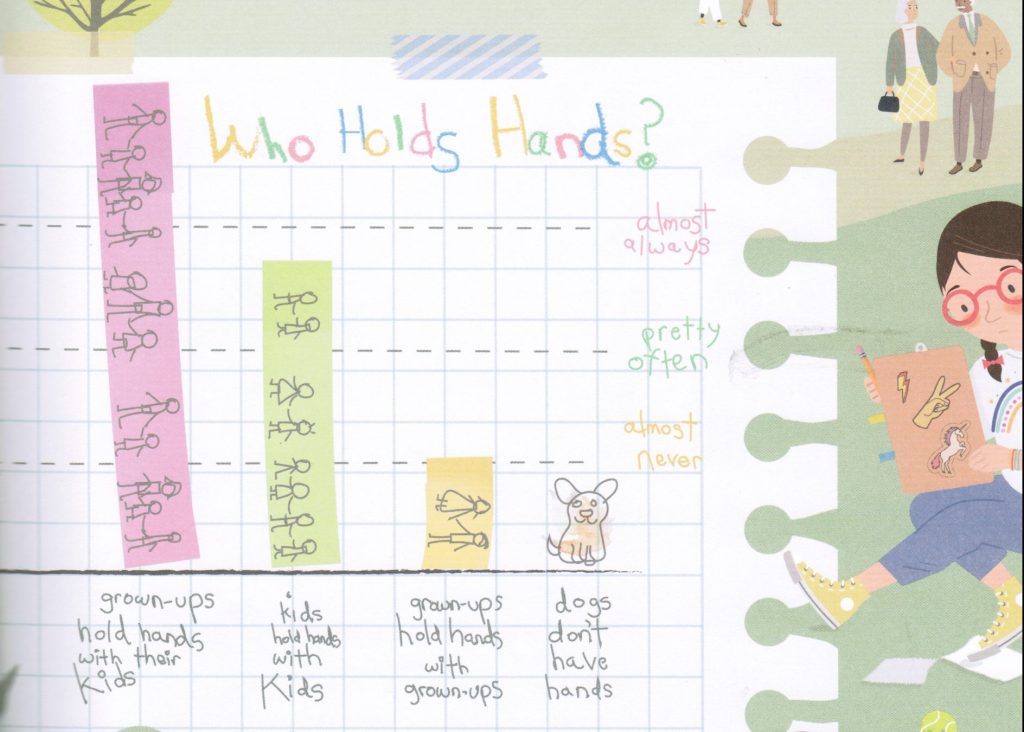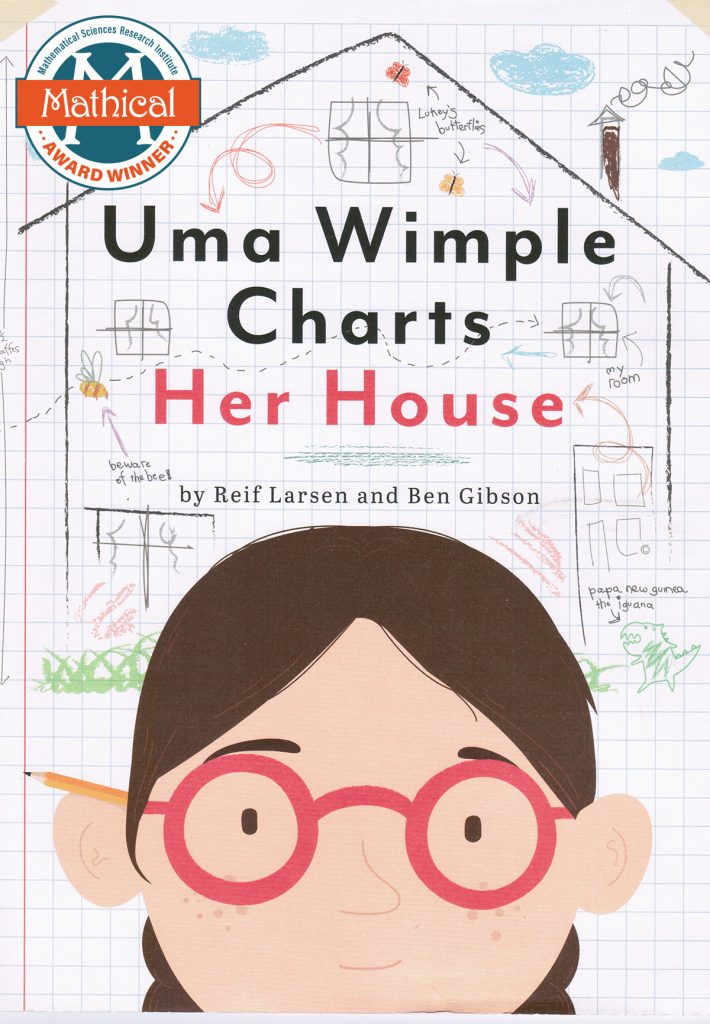¡También se puede aprender matemáticas a la hora del cuento! Intente crear sus propias preguntas.
Activity Summary
Use this storybook guide with the book “Uma Wimple Charts Her House.”
Many public libraries have this book. This book is a Mathical Award winner.
Reading Guide
About the Story
Uma Wimple loves to make charts: pictures, lists, diagrams, and graphs. She made her first chart—of her family’s fingers—at age 4. She thinks “a good chart should make you see the world in a new way.” One day, her homework assignment is to make a chart of her home. She thinks, “What makes a house housey?” With great persistence, she learns that a house is not just lines and angles but … Read this beautifully illustrated and funny (not pedantic) book to learn the lovely answer.

Words to Learn
Pie Chart, Bar Chart, Venn Diagram, Pyramid Chart, Tree Chart, Survey
About the Math
The math in this book involves different kinds of charts:
- A Pie Chart shows how a whole is divided into parts (number of pie slices for family members)
- A Bar Chart shows the frequencies of different things or events (number of screen hours for family members)
- A Venn Diagram shows what groups do and do not have in common (some children like cats, some like dogs, and some like both)
- A Pyramid Chart shows how things are arranged from most important (or largest) to least important (or smallest)
- A Map shows the location of objects
- A Tree Chart shows where things come from (like family ancestry)
Math Talk During Reading
- TALK ABOUT THE DIFFERENT CHARTS
- For the Who holds hands? Bar Chart, ask: “In this book, how many times did grownups hold hands with kids? A lot? A little? (4) How many times did kids hold hands with kids? (3) How many times did grownups hold hands with grownups? (1) And the dog? (It doesn’t belong: It never holds hands!)”
- For the Pegasus/Unicorn Venn Diagram, ask, “What does the diagram show? (Horses with wings, horses with horns, and horses with both wings and a horn.) What pictures are missing? (Horses with wings only and horses with horns only.)”
Try to come up with some of your own questions and comments, too!

Activity After Reading
- CREATE DIFFERENT CHARTS ABOUT YOUR OWN HOME
Create a Bar Chart to show the number of different colored socks or different toys that your child has and a map to show the location of different objects and pieces of furniture in your child’s room.
